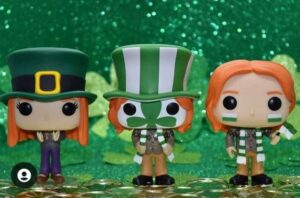From Blue To Green: The History Of St. Patrick’s Day
5th March 2023
Categorized Under: Myths and Legends from Around the World
Comments (0)
FROM BLUE TO GREEN: THE HISTORY OF ST. PATRICK’S DAY
St. Patrick’s Day is a holiday that has been celebrated for centuries around the world. It is a day that brings together people of all backgrounds to celebrate the Irish culture, and honor the life and legacy of St. Patrick, the patron saint of Ireland.
St. Patrick was born in Britain in the 4th century, but was kidnapped by Irish raiders and taken to Ireland as a slave. After six years, he managed to escape and returned to Britain, where he became a priest. He then felt called to return to Ireland and spread Christianity to the Irish people, who were largely pagan at the time.
Legend has it that St. Patrick used the shamrock, a three-leaf clover, to explain the Holy Trinity to the Irish people. The shamrock has since become a symbol of St. Patrick’s Day, and is often worn or displayed on this holiday.
St. Patrick’s Day was first celebrated in Ireland in the 17th century, and has since become a popular holiday around the world. It is typically celebrated with parades, green clothing and decorations, and traditional Irish foods and drinks.
St. Patrick’s Day is a holiday that celebrates Irish culture and the life of St. Patrick. It is a day that brings people together and highlights the importance of spreading love and kindness to all. So this St. Patrick’s Day, whether you’re Irish or not, let’s all raise a glass and celebrate the spirit of the holiday. Sláinte!
WHY WAS BLUE THE ORGINAL COLOR AND NOT GREEN?
Blue was actually the original color associated with St. Patrick’s Day, not green. This is because blue was the color of St. Patrick’s Order of St. Patrick, which was a chivalric order established by the British crown in 1783. The Order of St. Patrick was named after the patron saint of Ireland, and its members were primarily Irish noblemen. The color blue became associated with St. Patrick because it was used in the order’s regalia, such as its ribbons and badges. However, over time, green became more widely associated with Ireland and St. Patrick’s Day, possibly due to the greenness of Ireland’s landscape and the association of shamrocks with the holiday. Today, green is the color most commonly associated with St. Patrick’s Day.
@ K I D S I N C O
Click here to read: Lucky Leprechaun – free playscript
Click here to read: Kidsinco’s Complete List of Playscripts
Click here to read: Kidsinco’s Myths and Legends from Around the World



